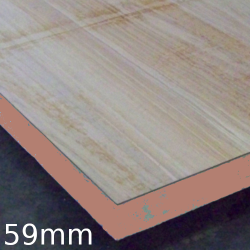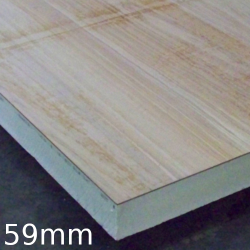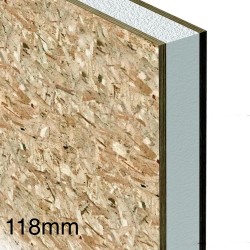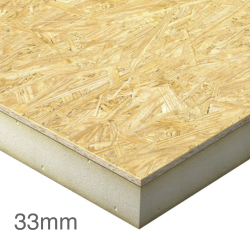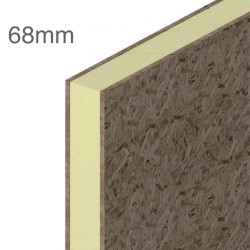OSB Boards
Oriented strand board is manufactured in wide mats from oriented layers of thin, rectangular wooden strips compressed and bonded together with wax and synthetic resin adhesives. The wood is shredded into strips, then sifted and placed in layers. After drying, these flakes are generally sprayed with a synthetic resin binder and wax. Wood strips on the external layers are aligned in the long direction, while internal layers are perpendicular. The number of layers placed is determined partly by the thickness of the panel and the individual layers can vary in thickness to give different finished panel thicknesses. The mat is compressed in a thermal press to compress the flakes and bond them by heat and curing of the resin. Then the boards are cut into standard sizes.
The adhesive resins used are;
- urea-formaldehyde - OSB type 1, non-structural, non-waterproof,
- isocyanate based glue with melamine-urea-formaldehyde or phenol formaldehyde resin glues at surface - OSB type 2, structural, water resistant on face)
- phenol formaldehyde resin throughout - OSB types 3 and 4, structural, for use in damp and outside environments.
BS EN 300 differs OSB panels into four technical classes;
- OSB/1 General purpose boards, and boards for interior fitments (including furniture) for use in dry conditions,
- OSB/2 Load-bearing boards for use in dry conditions,
- OSB/3 Load-bearing boards for use in humid conditions,
- OSB/4 Heavy-duty load-bearing boards for use in humid conditions.
OSB should generally be kept away from direct contact with water. Panels for use in humid conditions have a resistance to short term wetting and high humidity, but should be kept away from prolonged wetting. OSB will not normally be attacked by wood boring insects, but panels made using aspen and spruce are susceptible to fungal attack under prolonged wet conditions, while OSB panels made from pine have moderate resistance to attack.
OSB density varies depending upon the timber species and the process used in manufacture, typically are between 600kg/m3 to 680kg/m3. The typical sizes are 2440mm × 1200mm, 2440mm × 1220mm and 3660mm × 1220mm and in thicknesses of 6mm, 8mm, 9mm, 11mm, 15mm, 18mm, 22mm, 25mm and 38mm. Boards are produced with either square or T&G edges.
OSB will not normally be attacked by wood boring insects, but panels made using aspen and spruce are susceptible to fungal attack under prolonged wet conditions, while OSB panels made from pine have moderate resistance to attack.
OSB can be cut by a hand saw or power saw and machined - bored, planed, routed and spindled, planed with normal woodworking machinery. Conventional woodworking fixings and techniques can be applied to OSB.
- Ensure the joint parts are accurately machined.
- Use sharp cutters to avoid tearing or burnishing the surfaces.
- Use a high solids content adhesive with low flowing properties.
- Mate the panels accurately and hold them under pressure while the adhesive sets.
- Limit the width of grooves machined to about one-third of the thickness of the OSB. The depth of groove is typically about one-half of the panel thickness.
- Allow adhesive-bonded joints to condition for several days before sanding and finishing.
- Ensure the fit of the joints is not too tight to avoid a split along the edge.
- Apply the glue liberally to both the tongue and the groove to ensure the entire joint is bonded.


































































































































